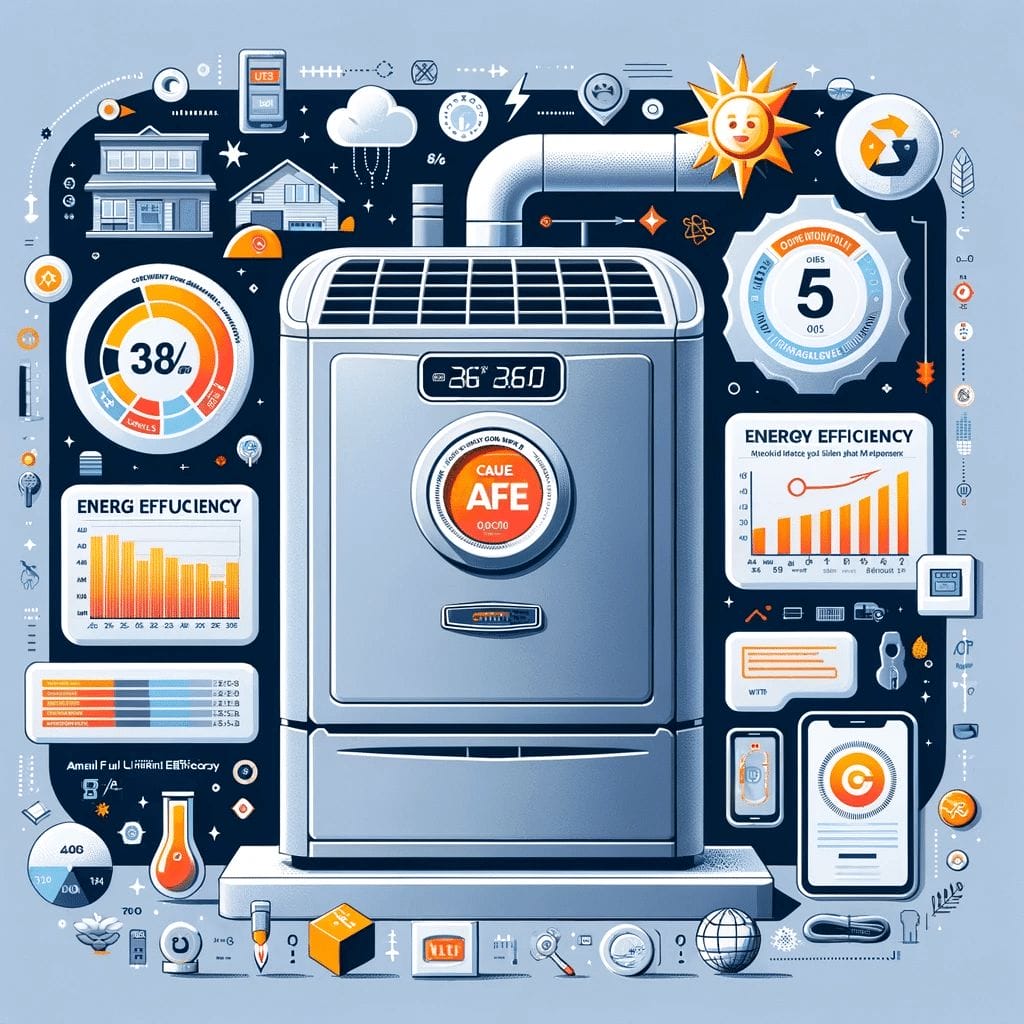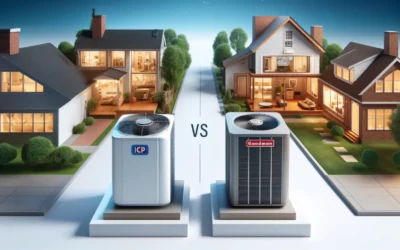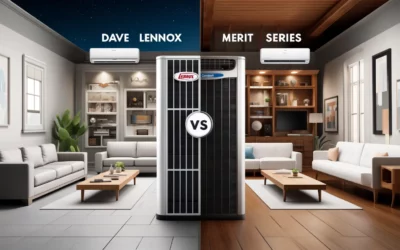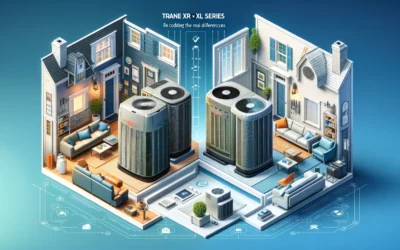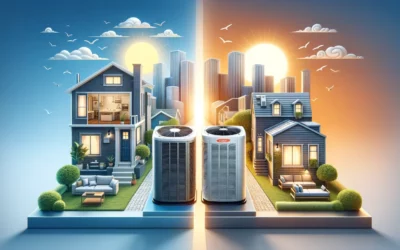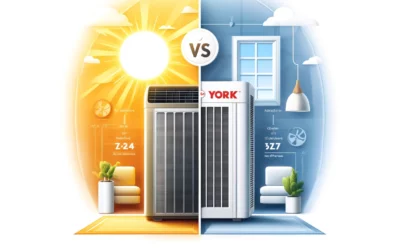On the frigid winter nights when Jack Frost waltily descends, tucking us in a snowy, uninvited embrace, the warm, comforting chimes of an in-home heater can feel like a heroic knight breaking through the ice castle. Despite this quintessential role, in-home heaters have often been cast in hushed whispers and murmured myths as the villains of energy efficiency and safety. So, let’s break the ice here and start a little fire for clarity, melting away the misconceived notions about our winter guardian angels. Welcome to the expedition where we debunk the chilling myths and reveal the raw, unadorned truth about the safety and efficiency of in-home heaters. Get your explorer gears on, the journey of revelation awaits!

The Unassailable Truth about In-Home Heaters Safety
Safety and efficiency are two words that often spark mixed reactions when mentioned in the same breath as in-home heaters. However, what if I told you that the panic and indecision are mostly because of misinformation? Indeed, thanks to advancements in technology, today’s in-home heaters are a far cry from their predecessors. They come equipped with numerous safety features, making them perfectly safe to use around the home. It’s fascinating how these compact appliances have evolved over time. The modern in-home heaters are designed with elements such as:
- Overheat Protection: In case of overheating, the heater automatically shuts off to prevent any potential hazards.
- Tip-over Switch: If knocked over, the heater will switch off instantly to curb any chances of a fire breaking out.
- Programmable Timers: This feature allows you to set the heater to switch off after a specified period automatically.
- Thermostat Control: Maintains a steady temperature in your room, therefore, enhancing energy efficiency.
But beyond safety, in-home heaters are also incredibly efficient. They deliver instant heating, which leads to major energy savings. On top of that, most models offer several heating modes, allowing you to adjust the heat output based on your needs. If we drill down these aspects in a table, the story becomes even clearer:
| Feature | Role |
| Instant Heating | Heat is delivered immediately, no need to wait for space to warm up. |
| Adjustable Heat Output | Allows for better control over the temperature and energy consumption. |
| Energy-Saving Modes | Offers various options to choose from, allowing you to save on power bills. |
So, instead of shivering in the cold and fearing for our safety, we should be relishing the comfort and efficiency that in-home heaters provide. It is time to separate facts from baseless myths create a cozy, warm environment in our homes.

Setting the Record Straight: How Efficient are In-Home Heaters?
Many people worry about the safety and efficiency of in-home heaters. With concern for the environment on the rise, such thoughts are no small wonder. However, it’s essential to debunk some prevailing myths because, surprisingly, in-home heaters can be an energy-efficient way to stay warm during cold winters. They are designed to be safe devices that are capable of providing warmth without breaking the bank or causing immense harm to our environment.
Let’s break down the most common misconceptions about in-home heaters:
1. Heaters Consume Unhealthy Amounts of Energy: This prevalent myth falls flat when one understands a heater’s functioning. Efficient in-home heaters use convection or radiation to heat the space, depending on the type. Modern heaters also have energy-saving options like adjustable thermostats and timers to avoid wasted energy. 2. Heaters Are Unsafe: Today’s heaters are designed with robust safety features. They come with a thermal cut off, tip-over switch, and overheat protection, thereby ensuring low risk of fire and accidents, making them safe for in-home use. 3. Using Heaters is Bad for the Environment: The truth is heaters are not inherently “bad” for the environment. Their impact on the environment depends on the source of electricity. Those powered by renewable energy have little to no environmental impact.
Now, let’s quickly check some statistics regarding in-home heaters:
| Heater Type | Efficiency |
| Electric Radiators | 100% |
| Gas Central Heating | 90% |
| Oil Central Heating | 85% |
| Wood Heaters | 77% |
In conclusion, in-home heaters are safe, efficient, and with today’s technology, better for the environment than they have ever been before.

Understanding Correct Use: How to Keep Your Heater Safe and Effective
Despite common misconceptions, maintaining the safety and efficiency of your in-home heaters may not be as complicated as it seems. With the advancement of heating technologies, today’s in-home heaters prioritize both your comfort and your safety. In order to keep your heater operating at peak performance, there are some easy-to-follow rules and precautions. Firstly, keep the area around the heater clear. Anything combustible such as drapes, furniture or even paper should be kept at least three feet away. Second, regular cleaning and maintenance is a must to keep your heater running efficiently. This includes cleaning or replacing the filter, checking for any leaks, and scheduling annual professional maintenance. Lastly, always use the correct fuel specified by the manufacturer. Using an inappropriate fuel can cause damage and may pose a safety risk.
| Common Heating Myths | The Truth |
|---|---|
| Running the heater at a constant temperature is more efficient | It’s better to adjust your thermostat according to changes in home occupancy and outdoor temperatures |
| Space heaters are dangerous and inefficient | When used properly, space heaters can provide efficient supplemental heat AND be safe |
| Electric heating is expensive | While electricity rates may be higher, electric heat can be very efficient and cost-effective with correct use |
Don’t be misguided by common heating myths. With accurate knowledge and the right practices, you can enjoy a warm and comfortable home, without compromising on safety and efficiency.

Safeguarding Your Home: A Complete Guide to Heater Safety Precautions
As winter rolls around each year and temperatures drop, home heaters become an essential part of our living space. But misconceptions about their safety and efficiency often leave homeowners confused and apprehensive. It’s high time we cast aside these myths and shed some light on the ins and outs of in-home heaters for a warmer, safer home environment.
Safety should always come first when it comes to using home heaters. To begin with, ensure that your heater is in good condition, free of visible damage and with all the safety features working optimally. Keep flammable materials, such as curtains, furniture, and clothing, at least three feet away from the heater. Never leave the heater on while sleeping or when you’re out of the house. And if you have children or pets, choose a heater with a cool-to-touch surface and tip-over protection.
Just as important as safety is the efficiency of your heater. Going for energy-efficient models can allow you to enjoy the cozy warmth without worrying about skyrocketing utility bills. Features like multiple heat settings, programmable timers, energy saving modes and automatic thermostats contribute toward the efficient operation of a heater. Moreover, for central heating systems, regular maintenance, timely repair and adequate insulation can help enhance efficiency.
| Heater Type | Efficiency | Safety Features |
|---|---|---|
| Oil-filled Heaters | High | Overheat Protection, Tip-Over Switch |
| Ceramic Heaters | Medium | Cool-Touch Exterior, Overheat Protection |
| Infrared Heaters | High | Overheat Shut-Off, Tip-Over Protection |
Remember, the right knowledge is your best defense against any potential hazards, and this comprehensive guide is sure to help you maintain a safe and cozy home this winter.

Breaking Down the Common Myths: Do In-Home Heaters Really Increase Fire Risks?
There is a prevailing myth that in-home heaters drastically increase the likelihood of house fires. However, it’s important to note that the correlation between in-home heaters and fire risks is often misconstrued, mainly due to improper usage or faulty equipment. In reality, when used responsibly, these gadgets do not inherently pose significant fire threats. Consider this comparison table:
| Heater Type | Safety Features | Safety Tips |
|---|---|---|
| Portable Electric | Automatic shut-off, tip-over protection | Keep free of flammable materials |
| Oil-Filled Radiator | No exposed heating elements, cool to touch | Ensure stable placement, avoid using extension cords |
| Infrared Heater | Overheat protection, cool to touch | Use on a solid, stable surface |
In reality, it’s not the heaters themselves that inherently heighten fire risk—rather, it’s the misuse and lack of understanding about their operation that leads to such unfortunate incidents. Educating yourself about the different types of in-home heaters, their safety features, and proper usage can significantly mitigate these risks. In-home heaters across the board, from portable electric models to oil-filled radiators to infrared heaters, come equipped with numerous safety features, such as automatic shut-off mechanisms, tip-over protection, and overheat protection. The keys to safe usage include maintaining a safe distance from flammable materials, ensuring stable placement, and avoiding the usage of extension cords. We can, therefore, conclude that with the right safety practices in place, the common apprehension that in-home heaters are an imminent hazard is indeed a myth.

Closing Remarks: Making the Most of your In-Home Heating System Safely and Efficiently
When it comes to in-home heating, safety and efficiency are key in providing comfortable warmth without the fear of risking one’s health or unnecessarily inflating energy bills. Embracing strategies such as routine maintenance, strategic temperature setting, and proper insulation can maximize the value and performance of your system. Furthermore, debunking common heating myths such as the belief that “bigger is better” when it comes to heaters, or that turning your heating off and on frequently saves energy, can enhance your understanding of achieving optimum comfort and cost efficiency.
Fact-based Decision Making:
| Myth | Fact |
|---|---|
| Space heaters are always a hazard | Space heaters are safe when used correctly: never left unattended, and away from flammable materials |
| Turning the heat up high will warm the room faster | An in-home heating system will heat at the same rate, regardless of how high the thermostat is set |
By breaking down these misconceptions, homeowners can make more informed choices about their in-home heating, ensuring not only warmth and comfort, but also safety and savings. Always remember that a well-informed user is key to an efficient and safe in-home heating system.
And so, we come to the end of our journey bumfuzzling through the foggy realm of rumors and misconceptions about in-home heaters. We’ve parried with persistent myths and jousted with jarring disinformation, all in the quest for truth. We’ve learned that our cozy, thermic sidekicks aren’t the unruly fire-breathing dragons some would make them out to be, but rather conscientious gatekeepers of our wintry warmth. We’ve unfurled the reality that with prudent use and a dash of commonsense, heaters are far from hazardous; they’re rather comrades in combat against the biting chill. They are sophisticated, safe and efficient marvels of modern science. Just as we would not fear the loyal hound because of the occasional errant growl, so should we not shun the heater for the infrequent mishap. As the world spins its wintery tale, be not swayed by fearful folklore about your in-home heaters. Let the debunked myths recede, hushed by the humming warmth wrapping up your space. So, stoke up your hearth, switch on your radiant buddy, and fear not. For armed with truth, understanding, and perhaps a cup of hot cocoa, we’re more than equipped to tackle whatever winter has in store. Here’s to embracing the warmth, safe in the knowledge that it embraces us right back.

